A
Auto Express
Guest
At a glance the latest Porsche Cayenne isn’t wildly different from its predecessor, but that’s what Porsche customers have come to expect. Despite this there’s some cutting edge new tech for this third generation model underneath that’s helped Porsche concentrate on improving it in key areas.
Starting inside, the new cabin treatment is more attractive and up-to-date, and occupants should notice significant improvements to refinement too. A lighter chassis and suspension upgrades have helped boost the already impressive dynamics, and as you would expect there are efficiency improvements, too.
That said, a diesel version is notably absent from the line-up at present, which will be a disappointment to some, and Cayenne owners pay a hefty price for the privilege of buying and running this prestigious and premium SUV - though the hybrid models offer an attractive proposition to company car drivers thanks to low CO2 emissions.
The Porsche Cayenne is around today in sufficient numbers to make it an unremarkable sight on the road, but when it launched all the way back in 2002 its unique combination of Porsche-standard performance and handling with SUV practicality made it a real talking point for car enthusiasts. Look up old reviews from the early noughties, and it’s evident that reviewers found the extreme Turbo version especially mind-bending.
Some sports car purists hated even the idea that Porsche could build an SUV, but the rest of the world got on with loving it. The result? Porsche had an instant best-seller on its hands, making profits the company has been able to reinvest in its sports car line-up. The Cayenne Turbo also provided a wake-up call for many other brands in the luxury ‘off-roader’ segment.

Porsche Cayenne S - rear seats
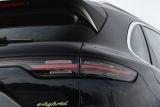
Porsche Cayenne E-Hybrid - rear light
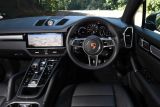
Porsche Cayenne S - dash

Porsche Cayenne E-Hybrid - infotainment
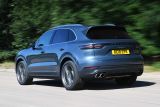
Porsche Cayenne S - rear
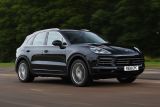
Porsche Cayenne E-Hybrid - front
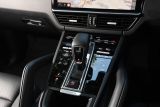
Porsche Cayenne S - transmission
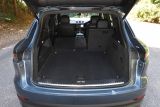
Porsche Cayenne S - boot

Porsche Cayenne E-Hybrid - rear cornering
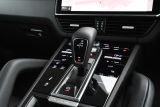
Porsche Cayenne E-Hybrid - transmission
The Range Rover Sport arrived swiftly in 2004, and extreme performance rivals for the Cayenne Turbo now include the BMW X5 M, Mercedes-AMG GLE 63, Maserati Levante S, Bentley Bentayga and Lamborghini Urus – the latter both sharing the latest MLB Evo engineering platform with the Cayenne and of course the Audi Q7, all being VW Group stablemates. Less extreme versions of the Cayenne must compete with an even broader spectrum of premium off-roaders, including the Volkswagen Touareg and Volvo XC90.
This latest version of the big Porsche 4x4 was introduced in late 2017, and is the third generation in the Cayenne series. While the previous-generation Cayenne was available with a V6 or V8 diesel engine, for the new model Porsche is concentrating on petrol and plug-in hybrid power for the time being.
With the growing popularity of SUV-coupes Porsche has also introduced the Cayenne Coupe, which omits a bit of practicality for more a svelte coupe-like body.
The launch line-up for the MkIII consisted only of the 542bhp Turbo V8, and a pair of turbocharged V6 engines, but the arrival of the E-Hybrid and Turbo S E-Hybrid brought a welcome dose of economy to the range, without compromising the performance one associates with Porsche's cars.
Features of the new model include 4D chassis control (inherited from the firm’s Panamera) with a variety of drive modes, active four-wheel drive and an eight-speed automatic transmission that’s standard across the range. It also comes with improved air suspension, while a new multi-link suspension set-up, torque vectoring, and optional active anti-roll bars set the scene for formidable performance on the road.
For an alternative review of the latest Porsche Cayenne SUV visit our sister site carbuyer.co.uk
Continue reading...
Starting inside, the new cabin treatment is more attractive and up-to-date, and occupants should notice significant improvements to refinement too. A lighter chassis and suspension upgrades have helped boost the already impressive dynamics, and as you would expect there are efficiency improvements, too.
That said, a diesel version is notably absent from the line-up at present, which will be a disappointment to some, and Cayenne owners pay a hefty price for the privilege of buying and running this prestigious and premium SUV - though the hybrid models offer an attractive proposition to company car drivers thanks to low CO2 emissions.
The Porsche Cayenne is around today in sufficient numbers to make it an unremarkable sight on the road, but when it launched all the way back in 2002 its unique combination of Porsche-standard performance and handling with SUV practicality made it a real talking point for car enthusiasts. Look up old reviews from the early noughties, and it’s evident that reviewers found the extreme Turbo version especially mind-bending.
Some sports car purists hated even the idea that Porsche could build an SUV, but the rest of the world got on with loving it. The result? Porsche had an instant best-seller on its hands, making profits the company has been able to reinvest in its sports car line-up. The Cayenne Turbo also provided a wake-up call for many other brands in the luxury ‘off-roader’ segment.

Porsche Cayenne S - rear seats

Porsche Cayenne E-Hybrid - rear light

Porsche Cayenne S - dash

Porsche Cayenne E-Hybrid - infotainment

Porsche Cayenne S - rear

Porsche Cayenne E-Hybrid - front

Porsche Cayenne S - transmission

Porsche Cayenne S - boot

Porsche Cayenne E-Hybrid - rear cornering

Porsche Cayenne E-Hybrid - transmission
The Range Rover Sport arrived swiftly in 2004, and extreme performance rivals for the Cayenne Turbo now include the BMW X5 M, Mercedes-AMG GLE 63, Maserati Levante S, Bentley Bentayga and Lamborghini Urus – the latter both sharing the latest MLB Evo engineering platform with the Cayenne and of course the Audi Q7, all being VW Group stablemates. Less extreme versions of the Cayenne must compete with an even broader spectrum of premium off-roaders, including the Volkswagen Touareg and Volvo XC90.
This latest version of the big Porsche 4x4 was introduced in late 2017, and is the third generation in the Cayenne series. While the previous-generation Cayenne was available with a V6 or V8 diesel engine, for the new model Porsche is concentrating on petrol and plug-in hybrid power for the time being.
With the growing popularity of SUV-coupes Porsche has also introduced the Cayenne Coupe, which omits a bit of practicality for more a svelte coupe-like body.
The launch line-up for the MkIII consisted only of the 542bhp Turbo V8, and a pair of turbocharged V6 engines, but the arrival of the E-Hybrid and Turbo S E-Hybrid brought a welcome dose of economy to the range, without compromising the performance one associates with Porsche's cars.
Features of the new model include 4D chassis control (inherited from the firm’s Panamera) with a variety of drive modes, active four-wheel drive and an eight-speed automatic transmission that’s standard across the range. It also comes with improved air suspension, while a new multi-link suspension set-up, torque vectoring, and optional active anti-roll bars set the scene for formidable performance on the road.
For an alternative review of the latest Porsche Cayenne SUV visit our sister site carbuyer.co.uk
Continue reading...
